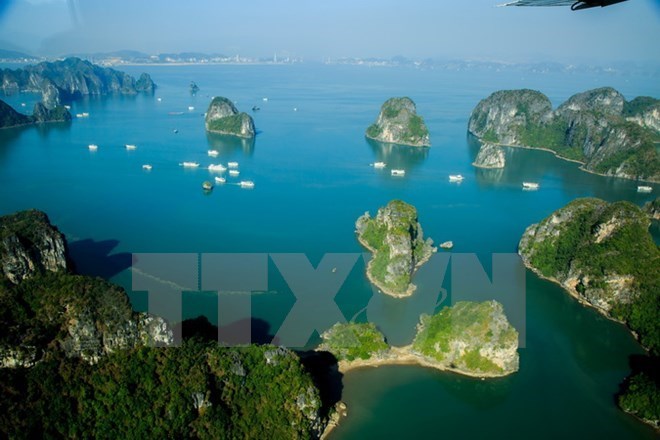
A tourism promotion event, titled "A Soulful Vietnam”, opened in the northern Italian city of Milan on October 3, with dozens of travel agencies in attendance.
As part of a programme organised by the Vietnam National
Administration of Tourism to promote Vietnam tourism in Western Europe, the
event introduced Vietnam’s tourism products and support policies. Popular
destinations, including Ha Long Bay, Hue imperial citadel, Hoi An ancient town
and Phong Nha – Ke Bang cave system were presented alongside Vietnam’s culture
and cuisine.

Ha Long Bay in Quang Ninh province (Photo: VNA)
Speaking at the opening ceremony, Vietnamese Ambassador to Italy Cao Chinh
Thien said effective tourism development benefits companies, people and the
economy of a country.
The diplomat pledged the embassy’s support to enhance Vietnam – Italy tourism
cooperation.
The number of European tourists to Vietnam last year reached about 13 million,
accounting for 15 percent of total foreign visitors to the nation. The figure
for Italian tourists was 58,000, up 13.2 percent year on year.
The Vietnamese Government has decided to extend its visa exemption policy for
citizens of five Western Europe countries – the UK, France, Germany, Italy and
Spain - from July 1, 2018 to June 30, 2020.
Source: VNA
A diverse chain of eco-tourism and resort destinations concentrated in Hoa Binh city and the districts of Tan Lac, Da Bac, and Luong Son… Along with the launch of several key high-quality resort tourism projects, these developments have reshaped the landscape and enhanced the appeal of Hoa Binh as a travel destination.
Boasting diverse terrain, a mild climate, and rich natural resources, Cao Phong district is increasingly asserting its place on Vietnam’s tourism map, attracting both domestic and foreign visitors. The district is renowned for its stunning landscapes, majestic mountains, a crystal-clear hydropower lake, and the unique cultural identity of local ethnic groups.
With its pristine landscapes, unique cultural heritage of Muong ethnic minority, and an expanding range of visitor experiences, Tan Lac district of Hoa Binh has fast become a captivating destination for both domestic and international tourists.
Until now, Sung village in Cao Son commune, Da Bac district remains the only Dao ethnic community in Hoa Binh province to develop a community-based tourism model. Beyond its untouched natural landscapes, cultural identity serves as the cornerstone attraction for visitors.
Alongside the diverse cultural identities of the Kinh, Muong, Tay, Thai, Dao, and Mong ethnic people, Hoa Binh province is also renowned as the "capital" of the northwestern Vietnamese cuisine, offering unique and distinctive dishes. At festivals, during Lunar New Year (Tet), or on significant family or community occasions, special dishes are prepared, leaving a lasting impression on visitors.
A Phong Linh (Yellow Tabebuia) flower garden in Thang village, Thach Yen commune, Cao Phong district is currently in full bloom, drawing a large number of visitors.



